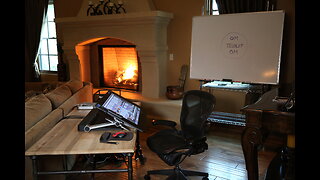"Exploring History: Unveiling Treasures at Kapunda Museum!"
The Kapunda Museum recognised as one of the finest folk museums in Australia was built in 1866. The museum contains a huge collection covering every facet of Kapunda’s history and there is an extensive display of agricultural machinery and historic vehicles.
The Hawke Gallery features engineering and foundry products from the industries 123 year history and commemorates the company founded in 1857 by former smuggler, Henry Binney Hawke. A massive Hawke cross-compound steam engine can be seen.
Bagot’s Fortune is an interpretative display covering all aspects of the early mining and pioneer lifestyle of the miners. Under the management of Captain Charles Hervey Bagot, the Kapunda Mine was developed from the wilderness to produce the richest and purest copper ore the world had seen.
The name Kapunda is thought to be derived from "Cappie Oonda", an Aboriginal term meaning "jumping water", possibly due to the number of natural springs in the area.
In 1842 while Charles Harvey Baggot and the Dutton family were using horses to herd sheep, they noticed numerous greenish grey stones on their property. Assays performed in England showed an unusually high copper content.
The Colony at this time was challenged financially, so the discovery of large, high quality copper ore deposits, and a further discovery of copper at Burra a few years later in 1845 leading to the mining boom and Cornish immigration, was most welcome.
Sir Sidney Kidman located his headquarters and horse sales in Kapunda in 1870. He lived in his house called Eringa. The town prospered, and when the mining boom slowed down it was replaced by agriculture and grazing.
The Kapunda museum at 11 Hill Street is sited in the once Baptist Church built in 1866. It has a comprehensive display of mining and agricultural equipment. The Hawke gallery exhibits the equipment manufactured by his engineering firm in 1857. There are numerous other displays reflecting the town's past, such as clothing, household items, and motor vehicles (ambulance and fire engine), and an early steam engine.
The origin of the museum dates to 1948, when the Education Department bought the church to convert it into an adult educational centre. Three years later the project was abandoned, and the Council bought the church building to save it from demolition. It was converted it into a museum. The museum has two floors and covers an area of 10,000 square feet. It is staffed by volunteers, opens daily, and portrays the social and commercial history of Kapunda. It is without doubt the best community museum in South Australia.
The heritage items of medical interest are stored in the lower level of the museum and show nursing, medical, and surgical items from the 19th and early 20th centuries.
kapunda, copper, mining, history, museum, Antiques
-
 LIVE
LIVE
Lofi Girl
1 year agoSynthwave Radio 🌌 - beats to chill/game to
515 watching -
 21:00
21:00
Mr. Build It
23 days ago3 Ways to Build Garden Beds
44K15 -
 1:42:14
1:42:14
Jewels Jones Live
1 day agoDETRANS w/ special guest Mary Margaret Olohan | A Political Rendezvous - Ep. 78
47.4K22 -
 1:36:46
1:36:46
Roseanne Barr
1 day ago $73.82 earnedFor Love of Country with Tulsi Gabbard | The Roseanne Barr Podcast #50
162K458 -
![[D2] Rumble Featured!! Lets Go!!! #RumbleTakeOver](https://hugh.cdn.rumble.cloud/s/fw/s8/1/5/g/l/6/5gl6r.0kob-small-D2-Onslaught-Grind-w-Some-P.jpg) 6:28:15
6:28:15
CHiLi XDD
17 hours ago[D2] Rumble Featured!! Lets Go!!! #RumbleTakeOver
51.6K7 -
 2:45
2:45
Chicks in the Office
15 hours agoHolly Madison Talks Reconciliation with Kendra Wilkinson
64.5K39 -
 7:58:23
7:58:23
Di bear
17 hours agoFinal Season Mission, Pantheon | Destiny 2
67.1K7 -
 6:54:43
6:54:43
SquallRush
19 hours agoAthenian Rhapsody!
57.9K8 -
 1:47:01
1:47:01
Real Coffee With Scott Adams
17 hours agoEpisode 2492 CWSA 06/01/24
67.4K51 -
 2:08:10
2:08:10
LFA TV
18 hours agoEP 47: Miles Guo Trial Special with Special Guests - Truth, Betrayal, and Fox Hunt | WHISTLE BLOWERS 6.01.24 12pm EST
57.7K18